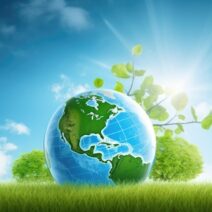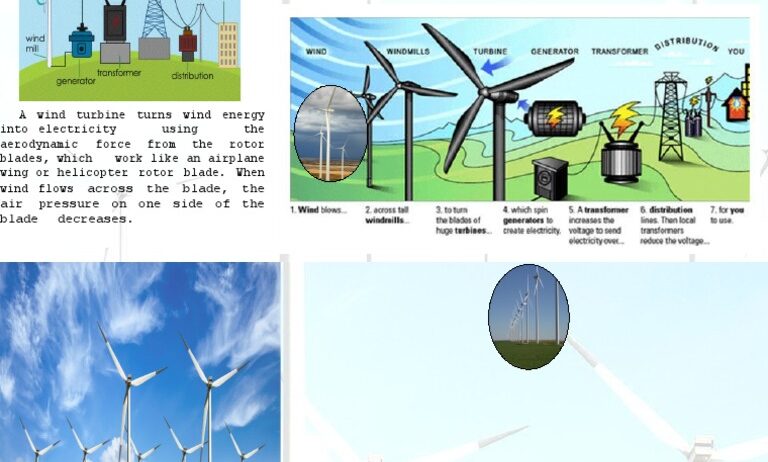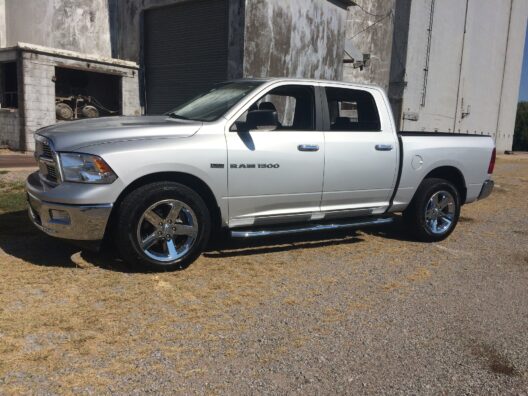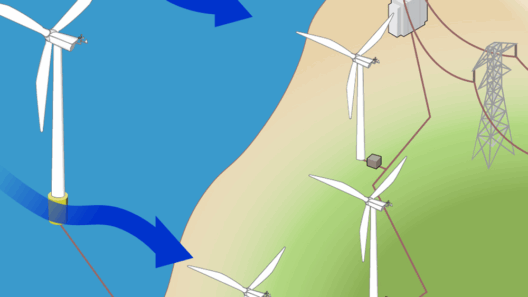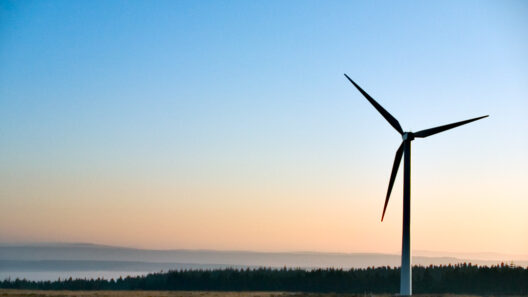Wind energy, an invaluable resource for sustainable power generation, has burgeoned into a primary alternative to fossil fuels. This clean energy source harnesses the kinetic energy produced by the movement of air, employing various technologies to convert it into electricity. As countries worldwide seek to mitigate climate change and enhance their energy security, the integration and application of wind power have taken center stage. Let us explore how wind energy is utilized globally, examining key technologies, their applications, and the aesthetic charm of wind farms.
Understanding Wind Energy Conversion
The initial step in harnessing wind energy involves converting the kinetic energy of wind into mechanical energy, which is subsequently transformed into electrical energy. The most prevalent technology employed is the wind turbine. These towering structures, with their visually striking blades, capture the force of the wind. The blades spin around a rotor, which is connected to a generator that produces electricity. Modern wind turbines are engineering marvels, often reaching heights of over 150 feet, with blades extending as long as a soccer field.
Wind turbines function effectively in various environments, from towering offshore installations to expansive wind farms located on arid plains. Offshore wind farms take advantage of the more robust and consistent winds found at sea, ensuring higher productivity and efficiency. Conversely, onshore turbines contribute significantly to localized energy grids, particularly in regions with favorable climatic conditions. The proliferation of turbine technology has not only enhanced energy output but has also spurred innovations in design, minimizing visual and environmental impacts.
Global Adoption: Case Studies of Wind Energy Utilization
Wind power has been embraced by numerous nations, each uniquely contributing to the mosaic of global energy generation. As of recent reports, countries like Denmark lead the charge, generating almost half of their electricity from wind energy. The nation’s strategy includes investing in both large-scale offshore wind farms and smaller community-driven projects. This decentralized approach not only empowers local communities but also enhances energy resilience against fluctuations in external supply.
The United States, with its sprawling landscapes, also presents numerous opportunities for wind energy capture. Home to the largest onshore wind farm, located in Texas, the U.S. has made remarkable strides in integrating wind energy into its grid. States like California and Iowa leverage their ample terrains for wind installations. The aesthetic appeal of wind farms, with their majestic turbines dotting the horizon, has transformed perceptions, integrating art and nature into the energy landscape. Wind farms thus become symbols of progressive energy policies while simultaneously offering breathtaking vistas.
Challenges and Triumphs in Wind Energy Utilization
While wind energy boasts myriad advantages, including reduced carbon emissions and sustainability, several challenges remain. One significant issue is the intermittent nature of wind. Wind does not blow uniformly, leading to fluctuations in energy production. To mitigate this, advanced energy storage solutions and robust grid integration methods have been developed. These advancements enable the smoothing of energy supply, ensuring reliability, even during periods of low wind.
Moreover, other concerns such as the aesthetics of wind farms and their impact on local wildlife are being addressed through comprehensive environmental assessments. Technological innovations, such as turbine designs that minimize noise and enhance bird safety, are being actively researched. The delicate balance between harnessing this energy source and preserving biodiversity highlights the multifaceted approach required in deploying wind energy.
Technological Innovations: Enhancing Efficiency and Aesthetics
The wind energy sector is witnessing a renaissance fueled by technological innovations that enhance both efficiency and aesthetics. Turbine designs are evolving, with manufacturers focusing on taller structures and larger blades that can capture more wind. These advancements enable greater energy output, making wind energy an ever more viable alternative to conventional energy sources. Additionally, the introduction of vertical-axis wind turbines promises a novel approach to wind energy capture, particularly in urban environments where space is often constrained.
New materials are also being employed in turbine construction, ensuring greater durability while reducing weight. The aesthetic appeal of modern turbines cannot be overstated; many patches of land that formerly held minimal visual interest are now transformed into vibrant energy parks. Initiatives that incorporate landscaping and eco-friendly designs create spaces where nature and technology coalesce, further enchanting the observer’s experience.
Wind energy stands as a beacon of hope in our pursuit of sustainable energy solutions. With its potential to significantly reduce greenhouse gas emissions, wind power encapsulates the essence of turning natural phenomena into a source of clean energy. From the majesty of wind farms sprawling across plains to the innovative designs of urban turbines, wind energy captivates not only through functionality but also through its aesthetic integration into the landscape. As technology advances and adoption spreads, wind energy is set to play a pivotal role in crafting a cleaner, greener future for generations to come.
